More than a year after debuting on mobile and PC, the Final Fantasy Pixel Remaster series is finally available on PlayStation 4 and Nintendo Switch (Yes, this is yet another Square Enix release that is, for some unknown reason, skipping Xbox consoles).
It’s quite a significant release, too, as it includes Square Enix’s first six Final Fantasy games alongside crisp, updated 2D pixel art and a bevy of other additions. Although these games are instrumental in the growth of the RPG genre, there hasn’t been an ideal way to play them on modern consoles. Considering pretty much every subsequent Final Fantasy game is available on contemporary hardware has made the omission of the NES’ FFI-III and SNES’ FFIV–VI feel especially glaring. If nothing else, the inability to play Final Fantasy VI — one of the greatest games of all time — on modern PlayStation and Nintendo hardware has been nothing short of a travesty.
As a lifelong Final Fantasy fan, I’ve been especially eager to revisit these titles, which I originally played on Game Boy Advance. Even then, Final Fantasy III was never released on the GBA; a 3D remake of the NES title later came to the likes of the DS and Vita (which is how I played it), but the OG version remained Japan-exclusive until the Pixel Remaster series. Clearly, then, keeping up with the iconic series has been a bit tricky. Thankfully, though, this collection proves to be a labour of love, making small changes where welcome while otherwise leaving everything about creator Hironobu Sakaguchi and co.’s original classics.
What’s old is new again
Let’s start with the visuals. Sprite-based artwork is always in vogue, but it just feels particularly at home for these NES and SNES titles. Opting to preserve that timeless visual style instead of doing an admirable-but-blander 3D remake in the vein of the DS versions of III and IV was the smartest choice for this collection. At the same time, Square Enix has commendably tapped Kazuko Shibuya, one of the key artists for the original games, to oversee the redrawn pixel art.
Some diehards may take issue with specific scenes looking a little “off,” but on the whole, the end result is something that lovingly retains the look and feel of the NES and SNES titles but also throws in an impressive coat of paint. On a deeper level, though, Shibuya’s involvement serves as a touching tribute to the artist herself. For many years, her contributions to the series went unrecognized (a sad reflection on the industry’s mistreatment of women), so the last two years of Pixel Remaster promotion have been a wonderful — if long overdue — way to help celebrate her legendary work.
Final Fantasy I.
Simply remastering the games would have been sufficient, but the Pixel Remaster series also includes other improvements. The biggest of these is an updated font. The original mobile and PC release featured a truly ugly and cheap-looking text style, but now, you have the option to swap to a more pixellated and retro alternative. While the games annoyingly still default to the inferior garish version, there’s now at least an official way to remove them.
Elsewhere, Square Enix has tapped legendary Final Fantasy composer Nobuo Uematsu — who produced the entire scores for the first nine games in the series — to oversee new arrangements. Now, I should confess that I’m a bit of a purist when it comes to Final Fantasy music; outside of the sensational arrangements in FFVII Remake, I often feel like modern remixes change too much of Uematsu’s phenomenal original masterpieces. But to my surprise, the updated tracks are an absolute delight. Whether it’s leaning into an absolutely badass guitar riff for FFIII‘s final boss theme or implementing a clever mix of violins in VI‘s boss theme, I was constantly enamoured with how Square Enix had reimagined these beloved tunes. Best of all, the console versions add the option to swap to the OG soundtracks if you decide you prefer those.
Final Fantasy Pixel Remaster – Opening Theme
Composer: Nobuo Uematsu
Arranger: Ryoue Takagi pic.twitter.com/a5GmKPBnbN— Daily Final Fantasy Music (@DailyFFSongs) April 13, 2023
The last major addition, which might just low-key be the Pixel Remaster series’ best, is its assortment of cheats. Across all six titles, you can choose to turn off random encounters and increase the amount of XP and Gil (money) you receive. Whether you’re someone who’s just looking to experience the stories or even just wants the ability to rush through a section that may be frustrating you, these options are absolutely brilliant. Square Enix has even added additional cheats for specific games, such as the respective ability points for V and VI‘s Job and Magicite systems (more on those later). While I lament the lack of the ‘x3 speed’ option we saw in the modern ports of PS1 classics like Final Fantasy VII, what the Pixel Remaster collection does have is still most welcome.
If there’s one major gripe I have, it’s that these don’t include any of the bonus content that was added to the GBA versions. For instance, the handheld’s Final Fantasy: Dawn of Souls collection of FFI and II included new dungeons and, for the latter game, a fascinating new campaign called “Soul of Rebirth” that focused on the side characters. Likewise, the VI GBA port added several new super bosses — including those from other numbered FF titles — that drop ultimate weapons. While the Pixel Remaster series at least includes everything from the original versions of the games, the lack of this extra content makes them feel like definitive releases.
But what about the games themselves?
Final Fantasy II is definitely the weakest game of the bunch.
All told, the individual quality of the original six Final Fantasy titles is a bit mixed. The first three are very much a product of their time. For example, the original game has a decidedly rough dungeon design and almost non-existent story, while FFII sports a questionably grind-heavy progression system that ditches XP and only lets you (slowly) level up by using abilities and taking damage. III, for its part, improves on a lot of these issues but is generally still pretty light on story. Truth be told, these games are mostly just nice to have for ardent fans like me with a sense of completionism; I’d be hard-pressed to recommend them to all but the most hardcore of JRPG players.
The latter three entries in the Pixel Remaster series, though? *chef’s kiss* Sakaguchi has been open about the fact that he deliberately shied away from adding much narrative to the NES titles due to a lack of faith in his own writing abilities. However, the death of his mother led him to want to tell more emotional stories, and we really start to see that in Final Fantasy IV. That’s a game that starts off with our hero, Cecil, being part of an evil empire and undergoing a path of redemption while meeting a well-rounded cast of other compelling characters. V‘s story, while a marked step-down, still entertains through a more lighthearted, swashbuckling vibe that also features one of the series’ best side characters, the bumbling henchman Gilgamesh.
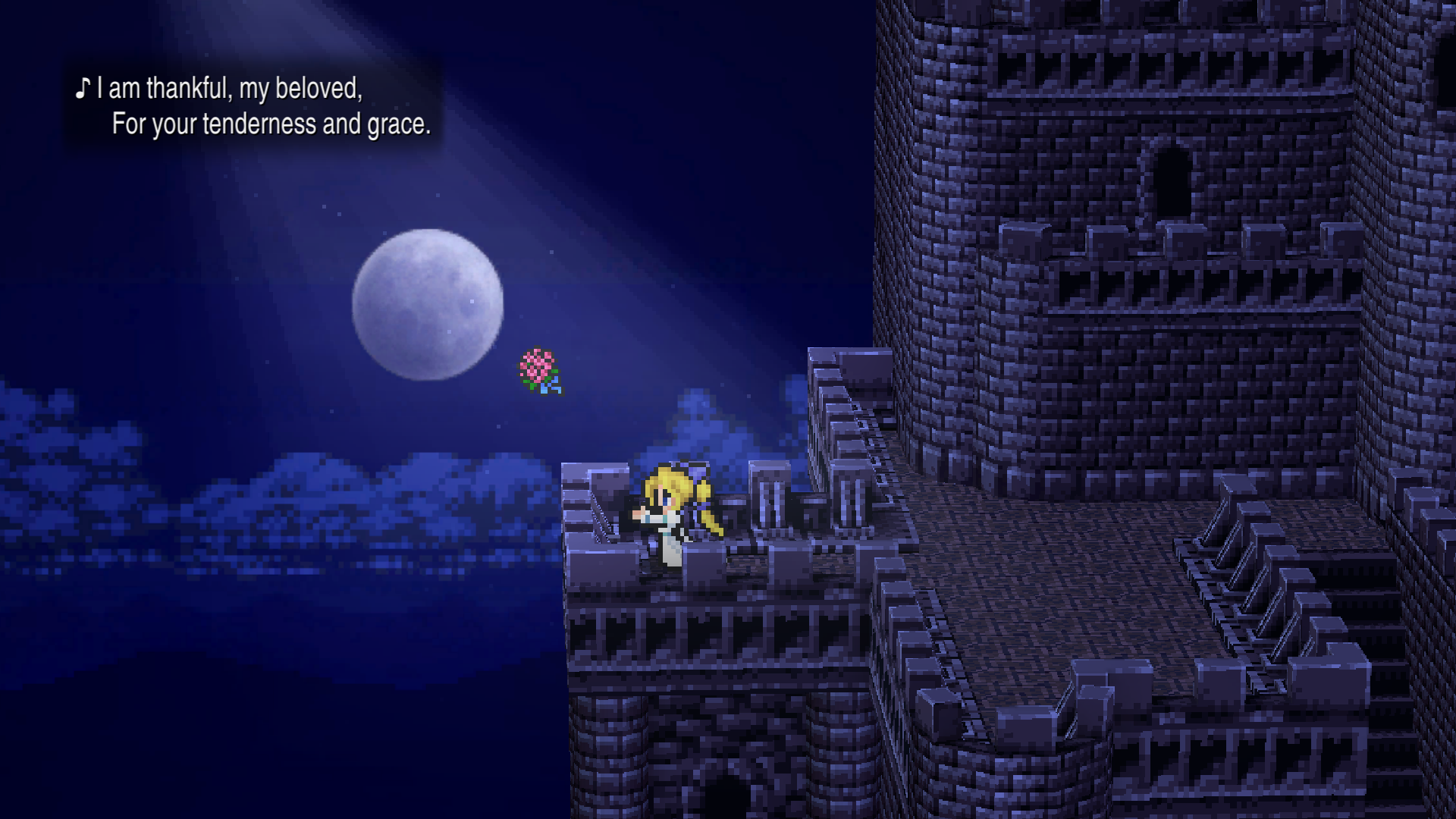
The emotionally-charged opera scene in Final Fantasy VI is one of many iconic scenes from the game.
Then there’s Final Fantasy VI, a game that not only has a quality narrative for something released in 1994, but one that still holds up among the medium’s best nearly 30 years later. It takes the tried-and-true backdrop of the “rebels vs. the evil empire” and uses it to tell a heartwrenching tale about complicated, three-dimensional people struggling to find meaning in a dark and depressing world. Add in Kefka, the game’s gleefully psychotic Joker-esque clown villain, and you have an all-time classic gaming story.
That’s to say nothing of what each of these SNES games brings to the table on the gameplay front. IV introduced the series’ classic Active Time Battle system, an ingenious way to liven up traditional turn-based combat. V has a staggeringly intricate Job system, affording you a vast number of customization options for your party. VI‘s Magicite — a precursor to FFVII‘s Materia system — likewise gives you a litany of new spells and Espers (summons) through which you can mix-and-match party configurations.
An irresistible package
![]() Final Fantasy is one of gaming’s best and most storied franchises, and at long last, it’s gotten an all-in-one collection of its original entries. While the trio of NES titles may be a bit dated for modern fans, the three SNES games are classics, with VI, in particular, holding up as one of the best games ever made. And while opinions on the quality of those games may vary, what’s indisputable is the value of the remasters. From the sharp new visuals to the winning remixes and handy cheats, these games have never looked or played better.
Final Fantasy is one of gaming’s best and most storied franchises, and at long last, it’s gotten an all-in-one collection of its original entries. While the trio of NES titles may be a bit dated for modern fans, the three SNES games are classics, with VI, in particular, holding up as one of the best games ever made. And while opinions on the quality of those games may vary, what’s indisputable is the value of the remasters. From the sharp new visuals to the winning remixes and handy cheats, these games have never looked or played better.
The entire six-game Final Fantasy Pixel Remaster series can be purchased for $99 on the Nintendo eShop and PlayStation Store. Alternatively, the first three games are available for $15.99 each, while the latter three can be bought for $23.99.
Image credit: Square Enix









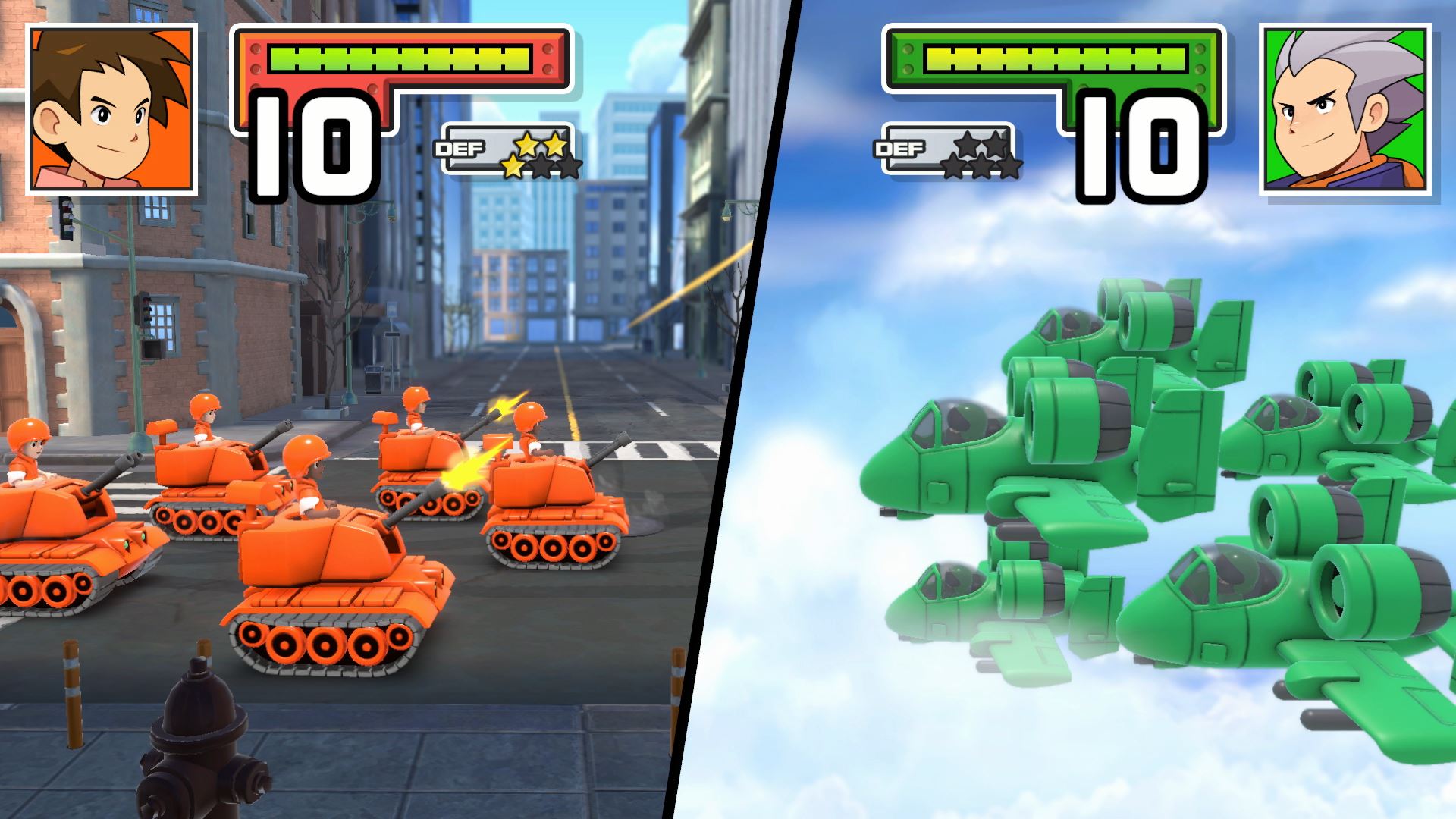 Speaking of Advance Wars 1+2‘s campaign, you can play Black Hole Rising immediately, but it makes sense to finish the original Advance Wars first given the two games’ stories connection. While both Advance Wars titles feature mostly the same style of missions, including removing all enemies from the field or capturing bases, Advance Wars 2 adds a few more variables to the mix, including Missile Silos, Pipelines and a new unit that can attack land and naval units called Neotanks.
Speaking of Advance Wars 1+2‘s campaign, you can play Black Hole Rising immediately, but it makes sense to finish the original Advance Wars first given the two games’ stories connection. While both Advance Wars titles feature mostly the same style of missions, including removing all enemies from the field or capturing bases, Advance Wars 2 adds a few more variables to the mix, including Missile Silos, Pipelines and a new unit that can attack land and naval units called Neotanks.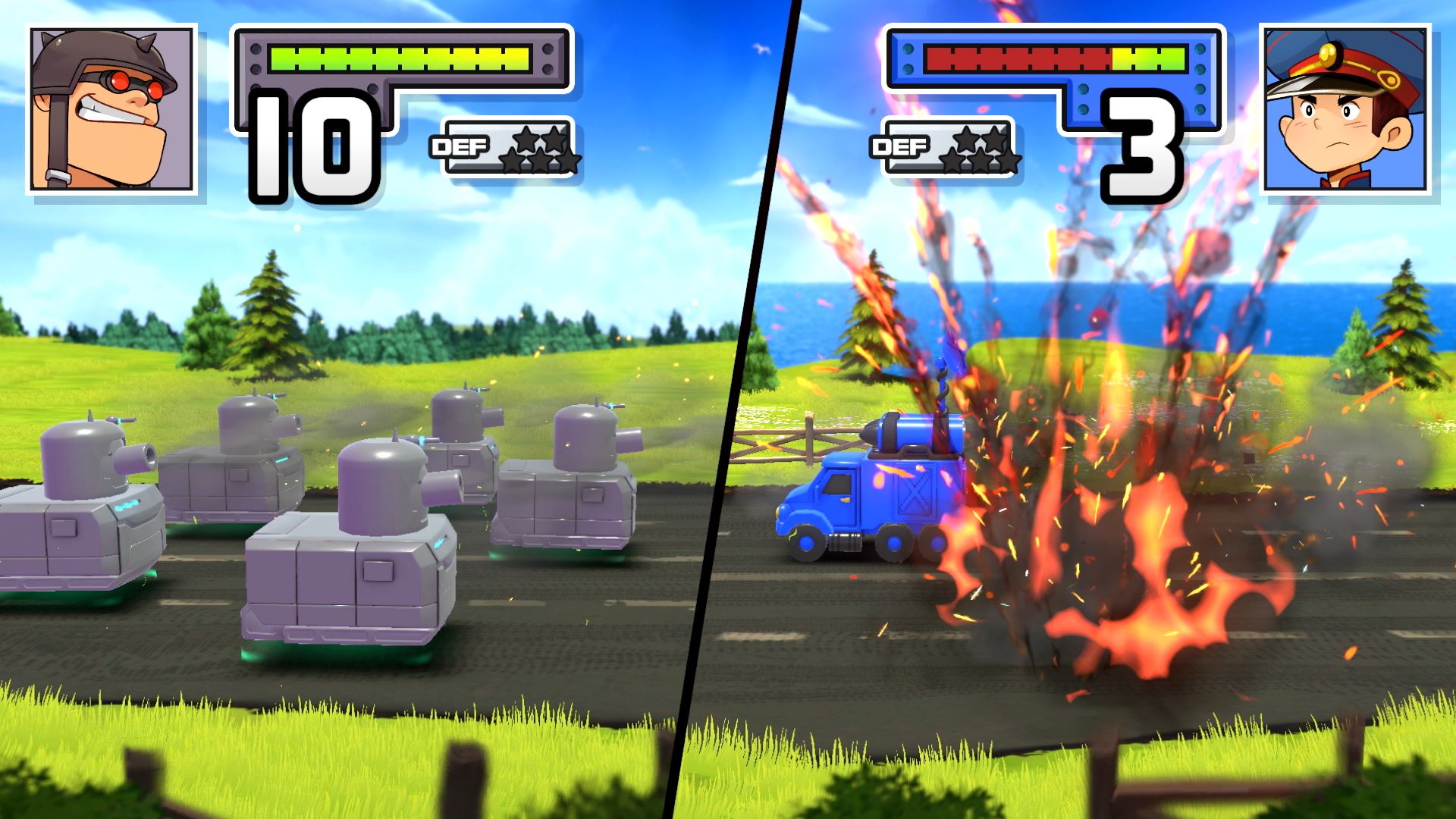 The visual upgrade feature in Reboot Camp brings a welcome coat of fresh paint to the series, which is a good thing given the original titles’ pixelated visuals haven’t aged that well, especially when compared to modern pixel art. Units look clean, skirmishes are quick and concise with unique effects, and the animations that appear when CO’s use their Powers feel like they’re directly pulled from an Advance Wars anime.
The visual upgrade feature in Reboot Camp brings a welcome coat of fresh paint to the series, which is a good thing given the original titles’ pixelated visuals haven’t aged that well, especially when compared to modern pixel art. Units look clean, skirmishes are quick and concise with unique effects, and the animations that appear when CO’s use their Powers feel like they’re directly pulled from an Advance Wars anime.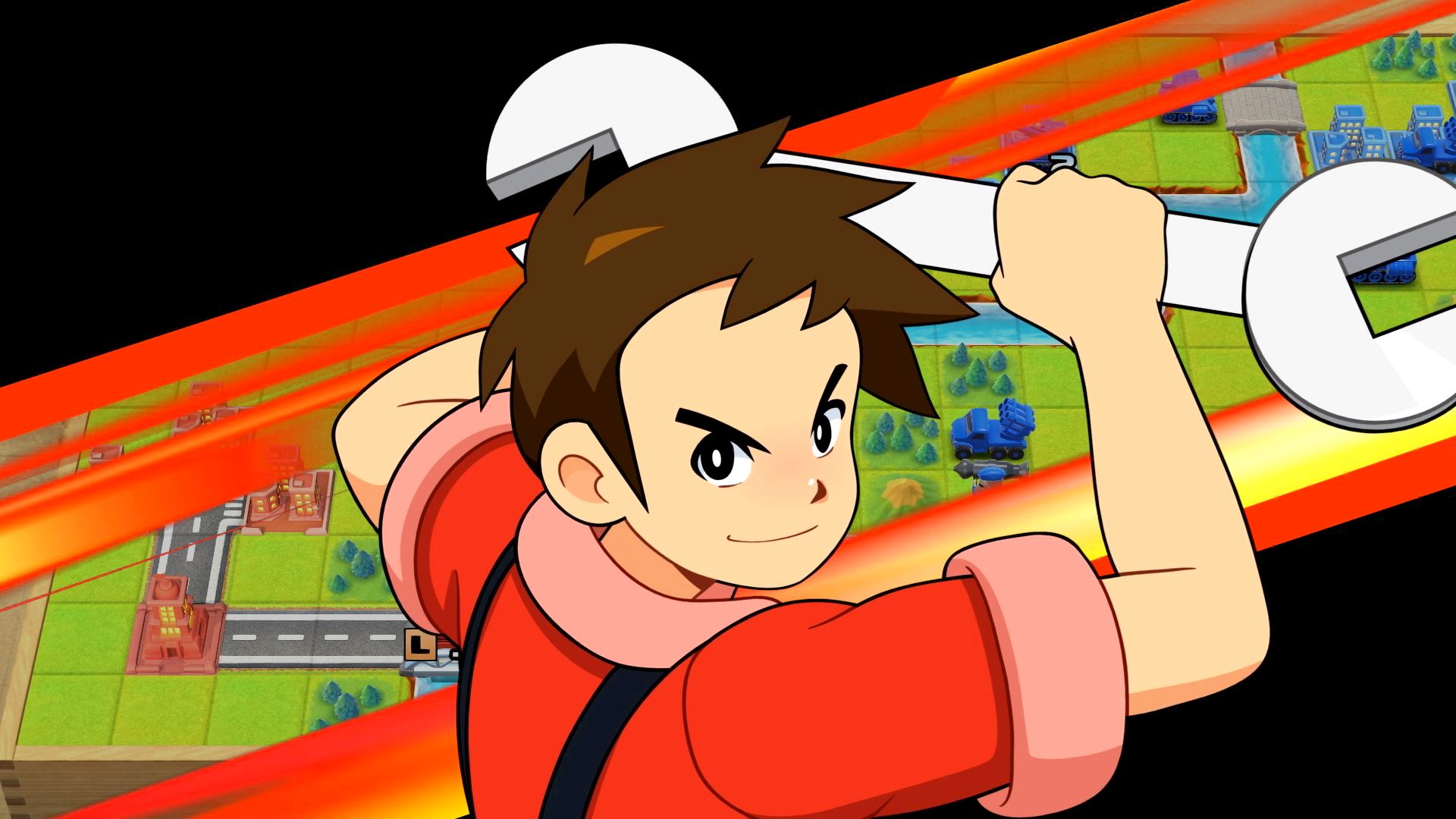 Overall, despite its shortcomings, Advance Wars 1+2: Re-Boot Camp is a solid remake of the classic turn-based strategy series. I’m hoping that if the game is successful, a true successor to
Overall, despite its shortcomings, Advance Wars 1+2: Re-Boot Camp is a solid remake of the classic turn-based strategy series. I’m hoping that if the game is successful, a true successor to 
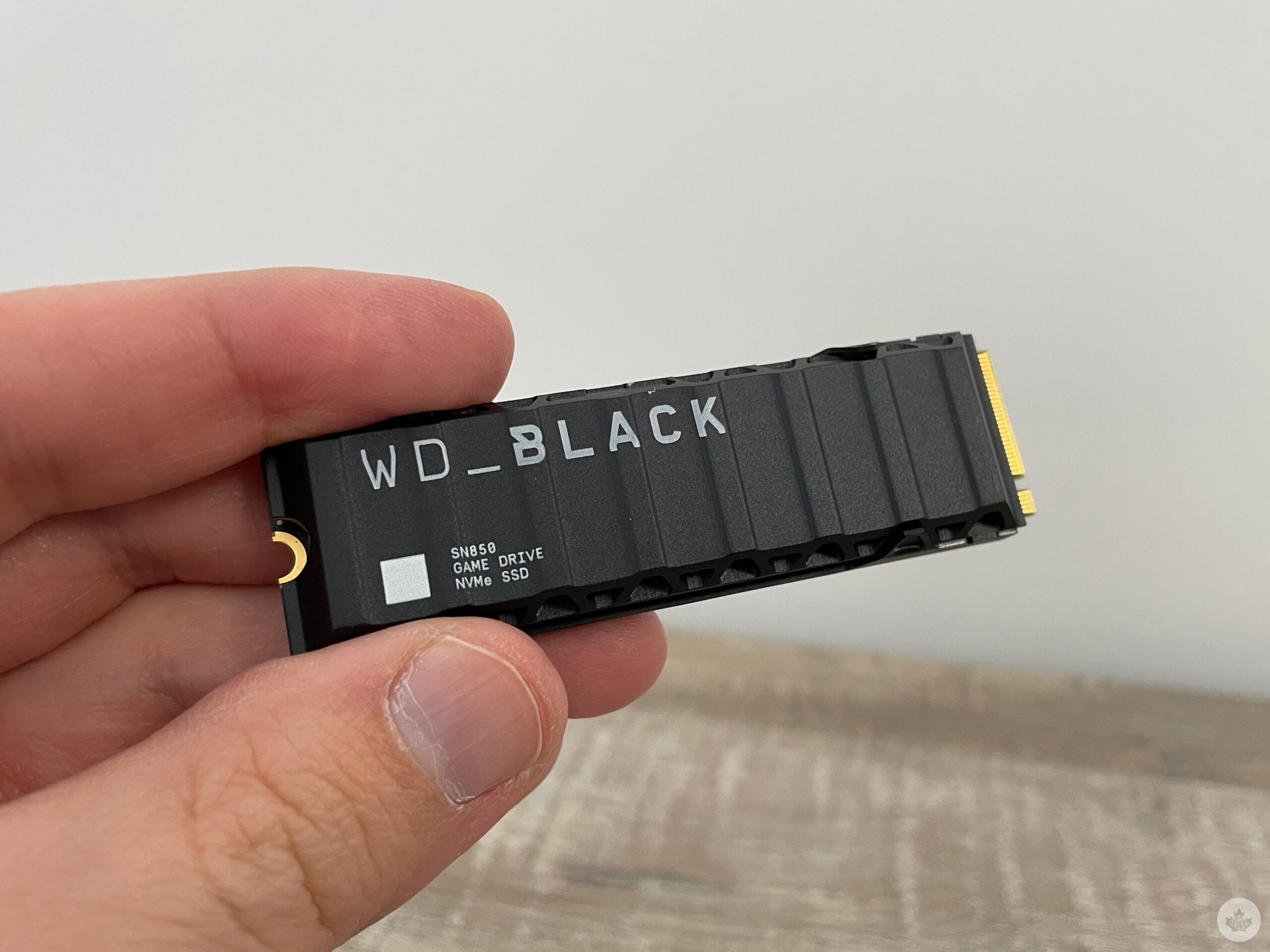 You can’t use just any drive to upgrade the PS5’s internal storage; it requires a NVMe SSD (Non-Volatile Memory Express Solid-State Drive). This high-performance storage device is designed for use in computing systems like the PS5, PC and beyond.
You can’t use just any drive to upgrade the PS5’s internal storage; it requires a NVMe SSD (Non-Volatile Memory Express Solid-State Drive). This high-performance storage device is designed for use in computing systems like the PS5, PC and beyond. Sony has kept the choices a little wider when it comes to the brand and make you can purchase for the console. There is no proprietary hardware
Sony has kept the choices a little wider when it comes to the brand and make you can purchase for the console. There is no proprietary hardware  To access the SSD slot,
To access the SSD slot, 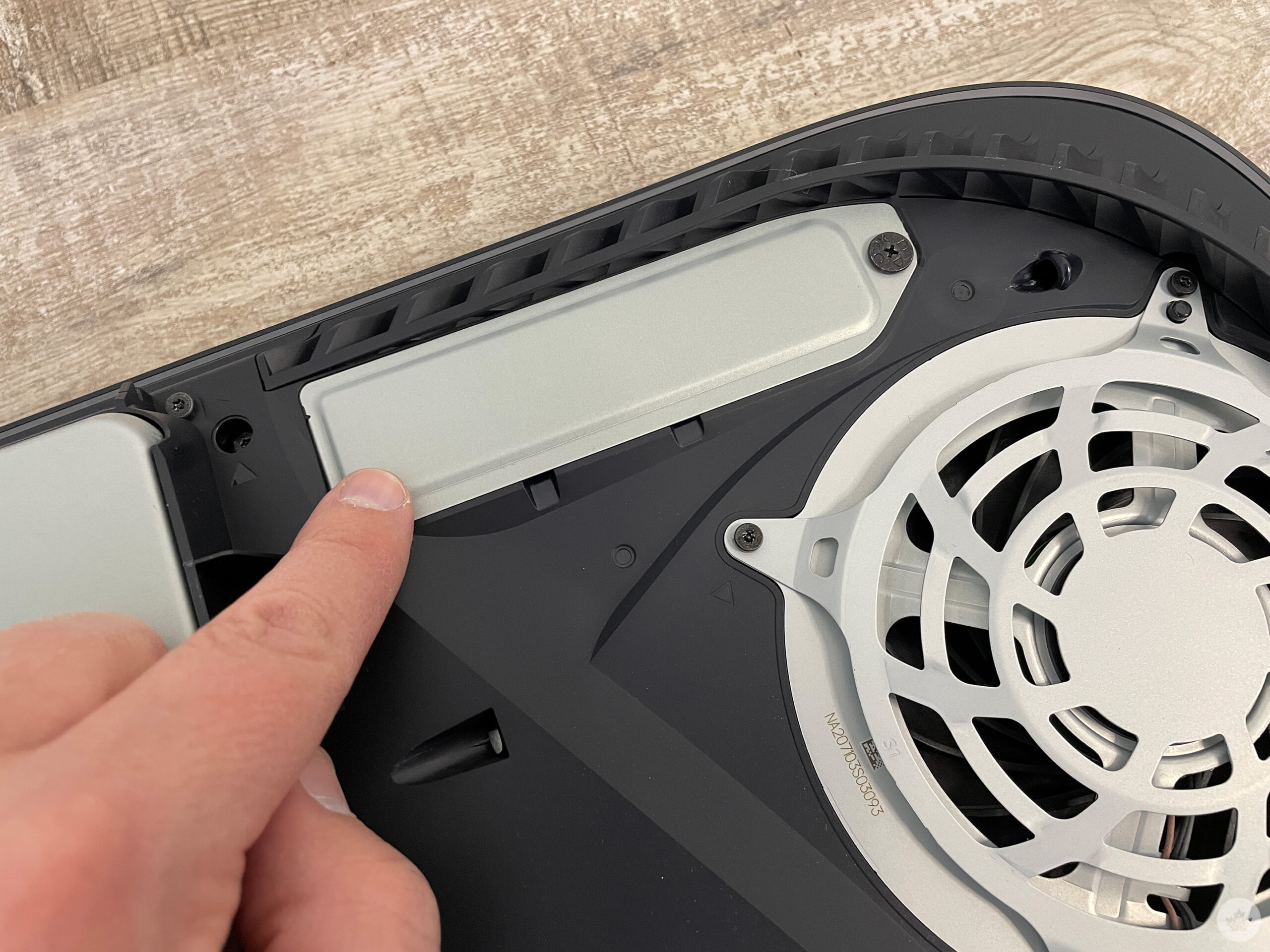 Use a Philips Screwdriver to unscrew and lift away the cover. Be careful not to strip the screw and make sure you are using the correct size tool. If the screwdriver isn’t turning the screw, double-check the size. Once the screw is removed, put it aside and be very careful not to drop it into any open areas of the PS5’s exposed innards.
Use a Philips Screwdriver to unscrew and lift away the cover. Be careful not to strip the screw and make sure you are using the correct size tool. If the screwdriver isn’t turning the screw, double-check the size. Once the screw is removed, put it aside and be very careful not to drop it into any open areas of the PS5’s exposed innards. Once the cover is removed, you’ll see a green area with five expansion screw holes. Inside this space, you’ll also find another screw which you’ll need to remove along with its spacer.
Once the cover is removed, you’ll see a green area with five expansion screw holes. Inside this space, you’ll also find another screw which you’ll need to remove along with its spacer.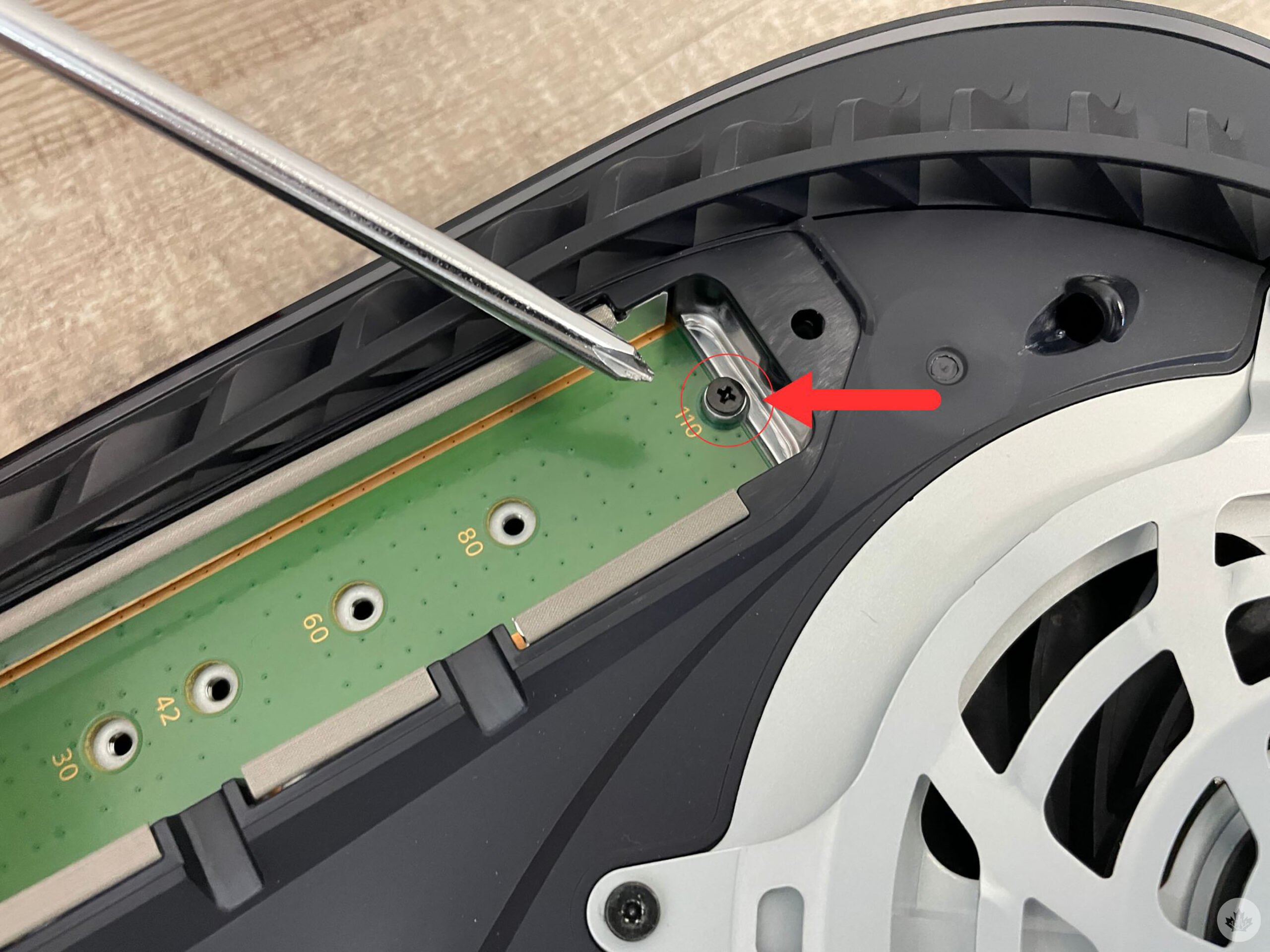 This screw and spacer combo will secure your SSD in place once it’s been inserted.
This screw and spacer combo will secure your SSD in place once it’s been inserted.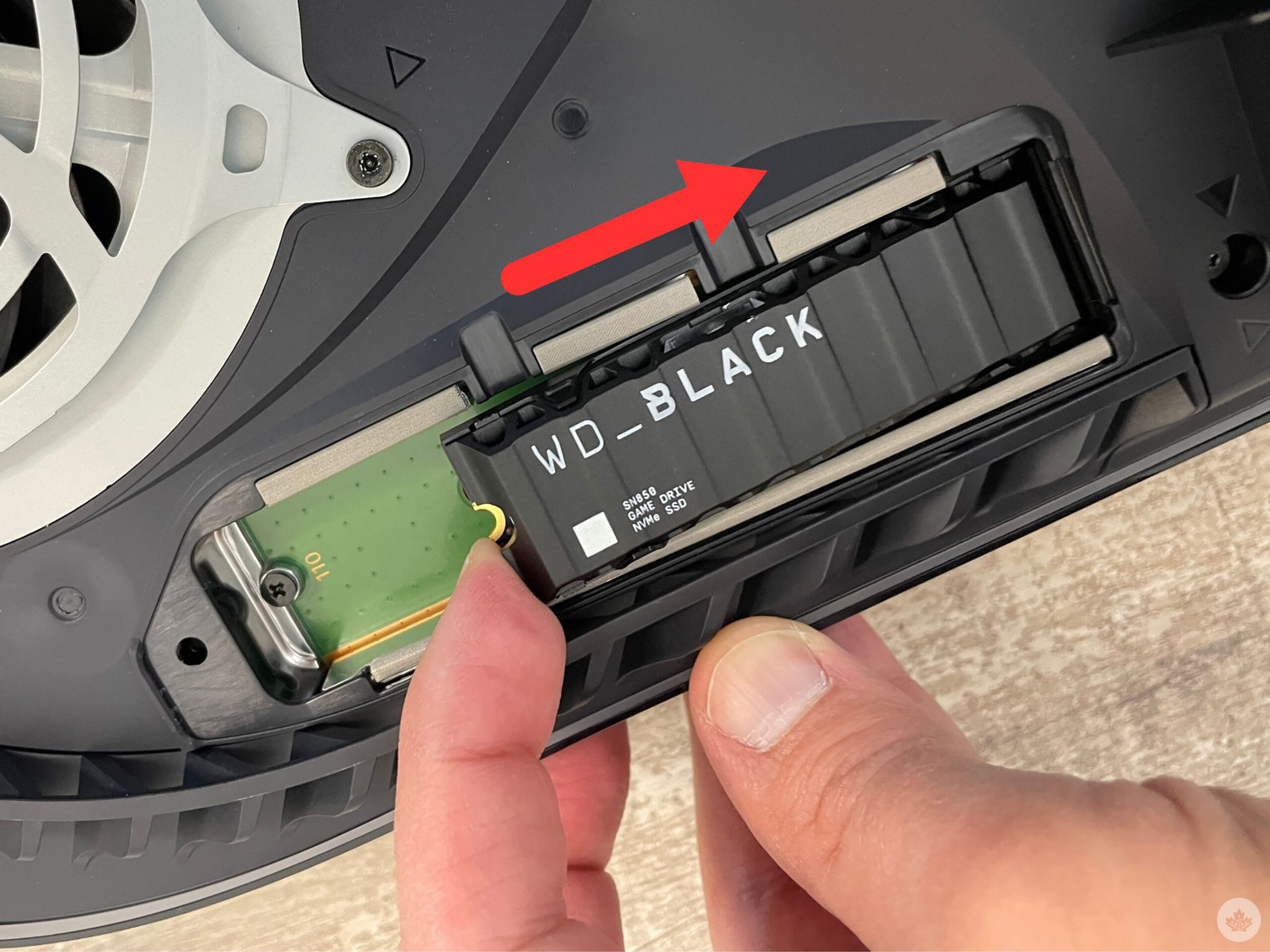 Carefully insert the NVMe SSD into the terminal slot, making sure to line up the pins correctly. Gently push the SSD into the connection area at an angled position. Once it’s seated properly, firmly insert it all the way into the port.
Carefully insert the NVMe SSD into the terminal slot, making sure to line up the pins correctly. Gently push the SSD into the connection area at an angled position. Once it’s seated properly, firmly insert it all the way into the port. Once the NVMe SSD is correctly connected and inserted in the slot, push it down gently and line it up with the empty screw hole, ensuring the hole is aligned with the top of the SSD. Next, place the spacer inside the screw hole that matches up with the top of the drive. Push the SSD flat and tighten the screw gently into the spacer.
Once the NVMe SSD is correctly connected and inserted in the slot, push it down gently and line it up with the empty screw hole, ensuring the hole is aligned with the top of the SSD. Next, place the spacer inside the screw hole that matches up with the top of the drive. Push the SSD flat and tighten the screw gently into the spacer.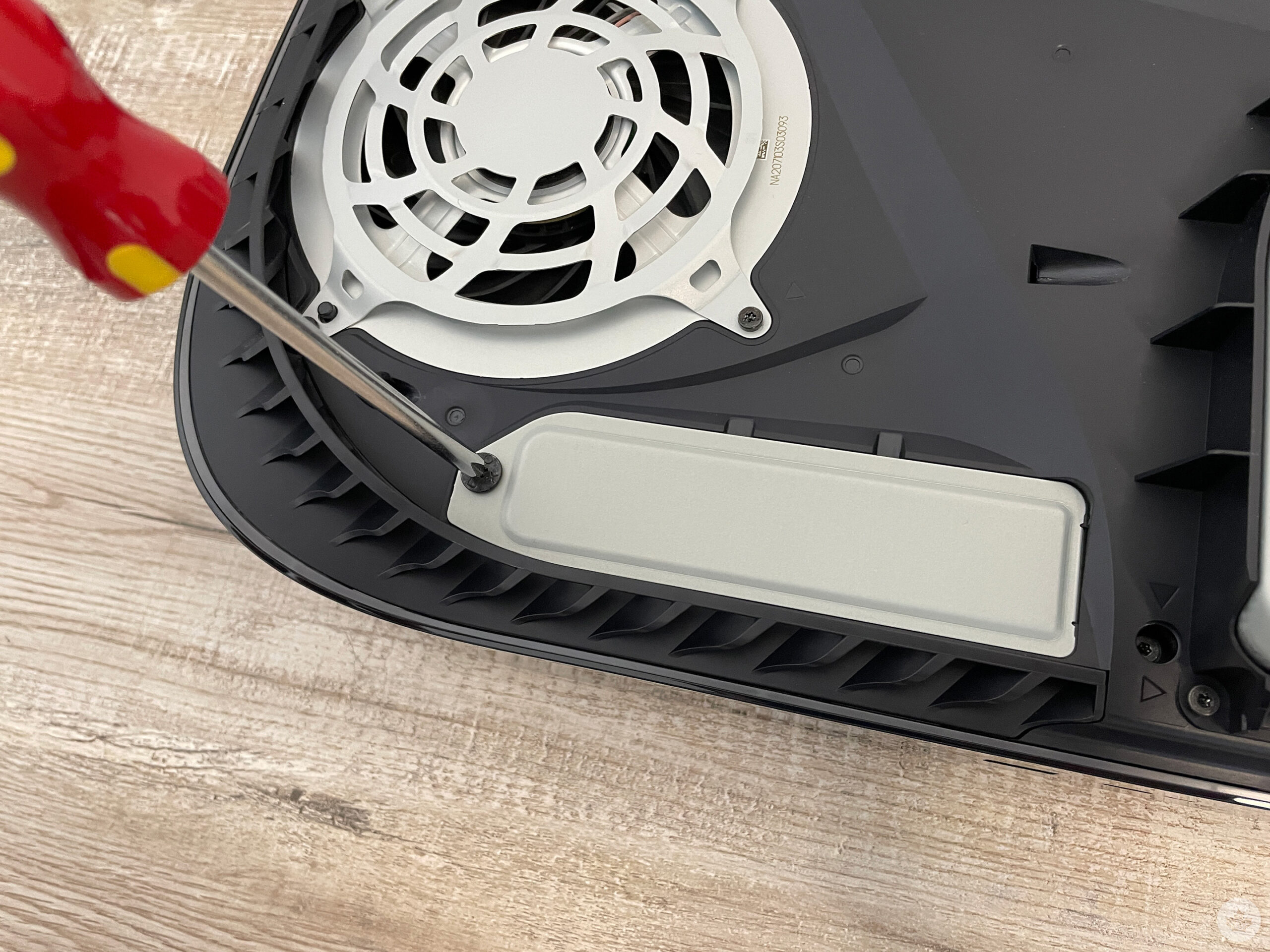 Once the screw is securely holding the drive in place, you can replace the grey SSD cover. Carefully slide it into place and use the screw to affix it to the hardware. Once again, don’t over-tighten it to avoid stripping the screw.
Once the screw is securely holding the drive in place, you can replace the grey SSD cover. Carefully slide it into place and use the screw to affix it to the hardware. Once again, don’t over-tighten it to avoid stripping the screw. Now it’s time to re-attach the PS5 cover back on the console, I found this to be the most difficult part of the process. The trick is to position it away from the top edge of the body and slide it down. You’ll hear a loud “click” when the cover is attached properly. This will likely take a few tries; just be patient and don’t aggressively force it.
Now it’s time to re-attach the PS5 cover back on the console, I found this to be the most difficult part of the process. The trick is to position it away from the top edge of the body and slide it down. You’ll hear a loud “click” when the cover is attached properly. This will likely take a few tries; just be patient and don’t aggressively force it.
 Congratulations! You have successfully installed a new SSD into your PS5. Now you can enjoy more space for games and other content.
Congratulations! You have successfully installed a new SSD into your PS5. Now you can enjoy more space for games and other content.
